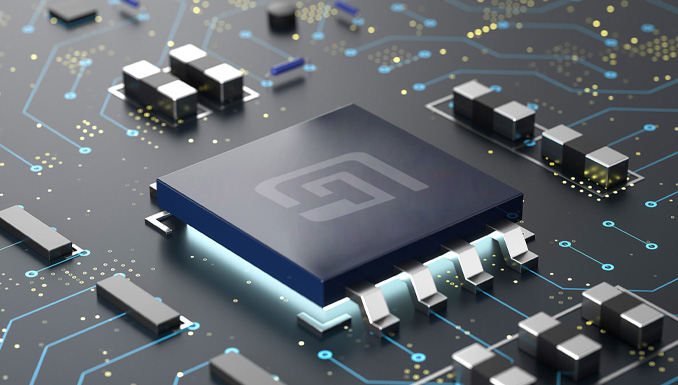What is the use of NOR flash
2024-01-24
In the vast expanse of electronic memory technologies, NOR Flash stands out for its unique combination of reliability, speed, and versatility. As a type of non-volatile memory, NOR Flash preserves stored data even when the power is turned off, making it an essential component in a myriad of applications. So, What is the use of NOR flash?
One of the most critical applications of NOR Flash is in the boot process of virtually all digital devices. Whether it's a laptop starting up or a smartphone waking from sleep, NOR Flash memory is responsible for initiating the sequence of operations that bring the device to life. It stores the initial program loader, BIOS, or firmware that kickstarts the operating system and other essential software.
Beyond the realm of consumer electronics, NOR Flash plays a pivotal role in the automotive industry. Modern vehicles rely heavily on electronics for everything from engine management systems to infotainment consoles. NOR Flash memory is employed to store the firmware that controls these systems due to its reliability and ability to withstand the harsh conditions often encountered in automotive environments.
In the telecommunications sector, NOR Flash is indispensable for storing the firmware and software that run network hardware such as routers, switches, and base stations. The stability and endurance of NOR Flash make it suitable for these applications, where consistent performance and long service life are non-negotiable.
Another significant use of NOR Flash is in the realm of industrial applications. Industrial control systems, such as Programmable Logic Controllers (PLCs), use NOR Flash to store control algorithms and operating system code. The robustness of NOR Flash ensures that these critical systems can operate reliably in various conditions, including exposure to extreme temperatures, vibrations, and electromagnetic interference.
Furthermore, NOR Flash memory finds its place in the gaming industry, particularly in the storage of the firmware for gaming consoles. Its ability to provide consistent performance and quick access to data ensures a seamless gaming experience.
In the realm of smart devices and the Internet of Things (IoT), NOR Flash is often used to store firmware that enables device operation and connectivity. From smart thermostats to security cameras, the dependability of NOR Flash ensures that these devices can perform their functions effectively and recover quickly from power interruptions.
Lastly, NOR Flash is also used in scientific and medical equipment, such as diagnostic machines and wearable health monitors. In these applications, the integrity and security of data are paramount, and NOR Flash provides the necessary reliability.
In conclusion, NOR Flash memory is a cornerstone of modern electronic systems, providing the critical storage needed to ensure the smooth operation of a multitude of devices. Its ability to offer fast read speeds, execute code in place, and maintain data integrity under a wide range of conditions makes it an indispensable technology in today's digital world. As we continue to push the boundaries of electronics, NOR Flash will undoubtedly evolve to meet the ever-growing demands for reliable and efficient data storage.

One of the most critical applications of NOR Flash is in the boot process of virtually all digital devices. Whether it's a laptop starting up or a smartphone waking from sleep, NOR Flash memory is responsible for initiating the sequence of operations that bring the device to life. It stores the initial program loader, BIOS, or firmware that kickstarts the operating system and other essential software.
Beyond the realm of consumer electronics, NOR Flash plays a pivotal role in the automotive industry. Modern vehicles rely heavily on electronics for everything from engine management systems to infotainment consoles. NOR Flash memory is employed to store the firmware that controls these systems due to its reliability and ability to withstand the harsh conditions often encountered in automotive environments.
In the telecommunications sector, NOR Flash is indispensable for storing the firmware and software that run network hardware such as routers, switches, and base stations. The stability and endurance of NOR Flash make it suitable for these applications, where consistent performance and long service life are non-negotiable.
Another significant use of NOR Flash is in the realm of industrial applications. Industrial control systems, such as Programmable Logic Controllers (PLCs), use NOR Flash to store control algorithms and operating system code. The robustness of NOR Flash ensures that these critical systems can operate reliably in various conditions, including exposure to extreme temperatures, vibrations, and electromagnetic interference.
Furthermore, NOR Flash memory finds its place in the gaming industry, particularly in the storage of the firmware for gaming consoles. Its ability to provide consistent performance and quick access to data ensures a seamless gaming experience.
In the realm of smart devices and the Internet of Things (IoT), NOR Flash is often used to store firmware that enables device operation and connectivity. From smart thermostats to security cameras, the dependability of NOR Flash ensures that these devices can perform their functions effectively and recover quickly from power interruptions.
Lastly, NOR Flash is also used in scientific and medical equipment, such as diagnostic machines and wearable health monitors. In these applications, the integrity and security of data are paramount, and NOR Flash provides the necessary reliability.
In conclusion, NOR Flash memory is a cornerstone of modern electronic systems, providing the critical storage needed to ensure the smooth operation of a multitude of devices. Its ability to offer fast read speeds, execute code in place, and maintain data integrity under a wide range of conditions makes it an indispensable technology in today's digital world. As we continue to push the boundaries of electronics, NOR Flash will undoubtedly evolve to meet the ever-growing demands for reliable and efficient data storage.
Next
2024-02-28
Recommended News
-
How to Auto Run Flash in Chrome: A Guide to Managing Flash Content
2024-12月-24
-
How to Turn Off Auto Flash
2024-12月-23
-
What is the Difference Between NOR Flash and NAND Flash?
2024-12月-16
























